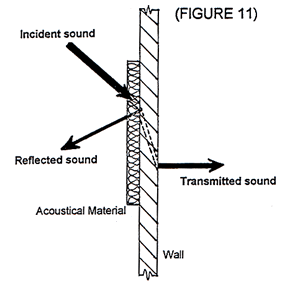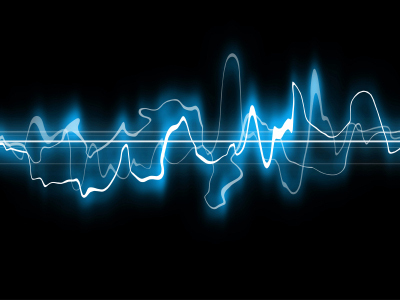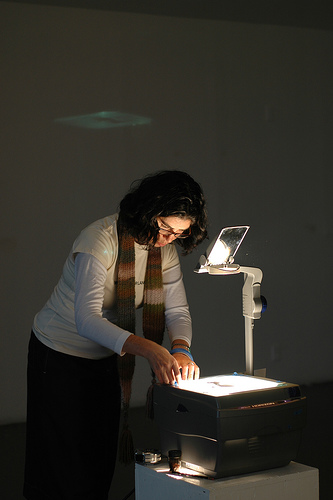Appendix D Literature and References
The following set of references are a sample of available literature on the topic of classroom acoustics:
Maryland State Department of Education: Classroom Acoustics Guidelines (2006) http://www.marylandpublicschools.org/NR/rdonlyres/FCB60C1D-6CC2-4270-BDAA-153D67247324/10128/ClassroomAcousticsGuidelines.pdf
National Clearinghouse for Educational Facilities: Classroom Acoustics Resource List http://www.ncef.org/rl/acoustics.cfm?date=4
Ceiling & Interior Systems Construction Association (CISCA): Acoustics in Schools (Design Tool) http://www.cisca.org/files/public/Acoustics in Schools_CISCA.pdf
“The effects of environmental and classroom noise on the academic attainments of primary school children”, Bridget M Shield1 and Julie E Dockrell, J. Acoust. Soc. Am. 123 (1), January 2008.
“Effects of noise on academic achievement and classroom behavior”, Lukas, J.S., DuPree, R.B. and Swing, J.W., Office of Noise Control, Cal. Dept. of Health Services, FHWA/CA/DOHS-81/01, Sept (1981).
“The effect of elevated train noise on reading ability.”, Bronzaft, A. and McCarthy, D. P., Environ. Behav. (7), 517–528, (1975).
“The effects of noise on children at school: a review”, Shield. B. and Dockrell, J. E., Build. Acoust. 10(2), 97–116 (2003).
“Aircraft noise and children’s learning,” Jones, K. , Environmental Research and Consultancy Department, UK CAA, ERCD Report 0908. Feb. (2010).
“Aircraft and road traffic noise and children’s cognition and health: a cross-national study”, Stansfield, S.A., Berglund, B., Clark, C. Lopez-Barrio, I., Fischer, P., Ohrstrom, E., Haines, M.M., Head, J., Hygge, S., van Kemp, I., and Berry, B., Lancet, Vol 365, June 4, (2005).
“Effects of Noise from Building Mechanical Systems on Elementary School Student Achievement”, Ronsse, L., and Wang, L. ASHRAE Transactions, Volume 116, Part 2.(need confirmation)
In the beginning, there was Silence!

“I would trade all of my technology for an afternoon with Socrates.”
Steve Jobs, CEO Apple Computer,
Newsweek, October 29, 2001
Remember that Socrates preferred to teach in the open air. “I teach under a tree!” But how realistic is this in the modern world? Weather, daylight, and of increasing importance, technology, all require that teaching take place in specialized environments where students not only can see and hear the teacher, but where comfort and provisions for changing technology can also be accommodated.
Notice the surroundings in the illustration above where the teacher talks in close proximity to the students. Pleasant, Peaceful. Quiet surroundings. But today’s students live in a world of constant distraction where products, PCs, peers and all variety of ‘pods’ compete vigorously for their attention. Not to mention background noise….
Why a Classroom Acoustics Standard (ANSI 12.60-2010)? Comprehension!

just a thought.
Note: The new ANSI Standard 12.60, part 1 and part 2, applies to classrooms up to 20,000 ft3 (2,000 ft2 with a 10’ ceiling or equivalent volume.) For larger classrooms, only the sections below on reverberation and noise reduction are applicable. The ANSI Standard does not apply to natatoria, auditoria, music performance spaces, teleconferencing classrooms or special education classrooms for the severely acoustically challenged students which all require special acoustical design and treatment that is not within the scope of this standard. Part 1 applies to classrooms in Permanent Schools, Part 2 applies to modular or relocatable classrooms in the same size categories.
Studies have shown that students learn faster, and comprehend and retain more in the proper acoustic environments and this is even more critical for the youngest students who are still learning how to pronounce words. A good acoustic environment is particularly important for students with hearing impairment or learning disabilities.
How effectively can students learn if they cannot both hear and understand their teachers? What can designers do to ensure the intelligibility of speech in the classroom? It’s critical to recognize that good room acoustics and low background noise go hand in hand in achieving this successfully, and that they must both be addressed in tandem.
Insert Venn diagram here.
Comprehension and the resulting academic achievement requires concentration and focused attention. To eliminate noise and distraction, it’s important for the designer to understand how sound is transmitted into and throughout the classroom in order to minimize distraction from background noise and to support audible speech.
Insert two graphs with some description of the data and reports.
We need to talk a bit about sound waves; their frequency, transmission, reflection, reverberation, absorption and about impact sound. In addition we need to discuss how sound travels, what constitutes noise, and suggest some simple control and mitigation strategies.
Add in the resources (references) on studies that support this work.
Background Noise Defined

Background noise comes from a number of sources all around, inside and out.
What is “Background Noise?” It’s the average sound level created by any combination of nearby noise sources as measured in the classroom of interest.

DSW to submit alternate for consideration
All of these possible noise sources, defined below, can contribute to background noise and should be considered in the placement of classrooms, and in the wall type for separation and exterior walls:
- Outside environmental noise from traffic, aircraft, and industrial sources should be considered during site evaluation and selection.
- Schoolyard and maintenance noise need to be considered, and they can be addressed in the design stage as well as mitigated through appropriate scheduling policy.
- Inside noise from adjacent spaces (classrooms next door, corridors, restrooms, etc.) should be considered in the design stage and they can be reduced or abated by careful placement in the first phases of planning.
All of these sources of noise can be addressed by proper noise and vibration control, including placement of mechanical equipment, proper design of walls, floors, and ceilings, vent layout/HVAC design and plumbing design. Selection of quiet devices or building systems (HVAC, plumbing, lighting) can also play a critical roll in noise reduction.
Note: the unwanted sounds from other speakers in the room such as a disruptive student is not addressed in this booklet
The background noise is the average sound level measured in deciBels, or dB. The human ear filters sound somewhat and is less sensitive to low frequencies; this is approximated by weighting the measurement mathematically. The resulting weighted and averaged sound level is called A-weighted deciBels or dBA and is an approximation of human perception of sound level at normal listening levels. As sound levels increase, the human ear filter changes, and at higher levels the filter is called C-weighted or dBC. Let’s take a look at a table from the standard that lists allowable levels to get an idea of the numbers:
Table X: Limits on one-hour-average A- and C- weighted background sound levels from internal sources associated with building services(a) and utilities or from outdoor sources.
|
Learning Space |
Greatest one-hour-average A- and C-weighted background noise level (dB) |
| Core learning space with enclosed volume ≤ 283 m3 (≤ 10 000 ft3) Core learning space with enclosed volume > 283 m3 and ≤ 566 m3 (> 10 000 ft3 and ≤ 20 000 ft3) Core learning spaces with Ancillary learning spaces (any volume) |
35/ 55(b)
35/ 55(b)
40 / 60(b) 40 / 60 (b,c) |
Note (a) for table X. The background sound level from HVAC shall be added (on an energy basis) to the level from other building systems such as lights, plumbing etc if applicable.
Note (b) for table X. For background sound from a multiple mode HVAC operating at design or maximum capacity, the background sound level limit is 2 dB higher than specified above. If the multiple mode HVAC system is operating at reduced or lower capacity, the background sound limit is 1 dB lower than specified above.
Note (c) for table X: A corridor used as an ancillary teaching space should adhere to the same level as for any ancillary space. If the corridor is only used for traffic, the background sound limit can be increased by 5 dB above that specified in this table.
So what is 35dBA? 40dBA? Before we get much further, let’s take a look at sound levels that you may be familiar with:
Use fig 1.6 from cavanaugh page 5 thermometer.
Bringing the Outside In? A bit about site selection.
Outdoor noise and selection of sites for learning facilities; Site background noise levels should be measured by a qualified professional. The noise level evaluation should consider all current and future sources. It is critically important that learning facilities not be located at sites where, depending on the anticipated construction method, greatest outdoor one-hour average A-weighted sound level, herein called “background noise level” * exceeds the following limits:
Note: OITC is the abbreviation for “Outdoor-to-Indoor Transmission Class” and is a single number descriptor (similar to STC or “Sound Transmission Class”) that rates the airborne sound attenuation qualities of a building element (roof, wall, door, window). A higher OITC indicates a greater ability to reduce airborne sound, from outdoors, through the assembly. As with the STC rating, it is measured in accordance with procedures specified by ASTM Standards. See Clause ______ in ANSI S12.60, Part 1, for further details. STC will be covered in detail in section 11 and 13.
<55 dBA
1. Where the outdoor background noise level is less than 55 dBA, conventional construction methods may be used, provided the external walls are designed to have an OITC rating not less than 30 dB
55 – 60 dBA
2. Where background noise level is between 55 dBA and 60 dBA, conventional construction methods may be used, provided the external walls are designed to have an OITC rating not less than 25 dB below the greatest outdoor one-hour average A-weighted sound level [e.g. if the greatest outdoor one-hour average A-weighted sound level is 60 dB, the OITC rating must not be less than 60 – 25 or 35dB]
60 – 65 dBA
3. Where background noise level is between 61 dBA and 65 dBA, the external shell must be designed to provide adequate noise isolation and to conform to the limits for background noise levels (as listed in table X in the previous section.) The external walls shall be designed to have an OITC rating not less than 26 dB below the greatest outdoor one-hour average A-weighted sound level. Construction techniques are not typical and construction workmanship must be carefully monitored.
66 – 70 dBA
4.Where background noise level is between 66 dBA and 70 dBA, the external shell must be designed to provide adequate noise isolation and to conform to the limits for background noise levels (as listed in table X in the previous section) and the external walls designed to have an OITC rating not less than 27 dB below the greatest outdoor one-hour average A-weighted sound level. Construction techniques are not typical and construction workmanship must be carefully monitored.
71 – 75 dBA
5. Where background noise level is between 71 dBA and 75 dBA, the external shell must be designed to provide adequate noise isolation and to conform to the limits for background noise levels (as listed in table X in the previous section) and the external walls designed to have an OITC rating not less than 28 dB below the greatest outdoor one-hour average A-weighted sound level. Construction techniques are not typical and construction workmanship must be carefully monitored.
76 – 80 dBA
6. Where background noise level is between 76 dBA and 80 dBA, the external shell must be designed to provide adequate noise isolation and to conform to the limits for background noise levels (as listed in table X in the previous section). Construction techniques are not typical and construction workmanship must be carefully monitored and the external walls designed to have an OITC rating not less than 29 dB below the greatest outdoor one-hour average A-weighted sound level but not greater than 50 dB.
> 75 dBA
7. Where the background level is greater than 80 dBA, do not build. Another, quieter site should be selected as allowable noise levels will be extremely difficult to achieve regardless of construction method or workmanship.
(*note: In determining the greatest outdoor one-hour average A-weighted sound level , current and future levels must be considered, including a margin for safety for an increase in level in the future and other uncertainties. Widely accepted models of industrial and transportation noise are available from environmental planners and acoustical consultants.)
(**note: Sound pressure level in the ANSI 12.60 Standard is measured in A-weighted decibels and is often expressed as dB.)
A detailed table of the above design requirements are in the ANSI 12.60 Standard under Table 3 in section 5.4.1.4.
Background Noise – How Much is OK?

A signal to noise ratio of 10dB. At least 15dB is required for good intelligibility. DSW to reverse field
A moderate level for a teacher’s voice is around 67dB at 1 meter (3feet). However, as the sound waves spread, the level drops with distance. A well designed room that provides useful early sound reflections will in turn provide support to an instructors voice to a level of about 50dB at the farthest areas, which can cover more than half the room. Without support, 50dB is not realistic at these farthest points.
To insure good speech intelligibility, we need to maintain an average differential between speech level and background level (called signal to noise ratio) of about 15dB, which means the A-weighted background noise level should not exceed about 35dB (this is the accepted background noise level per the ANSI Standard for typical classrooms, (volumes less 20,000 ft3)). That is, 50dB (signal) minus 35dB (noise) equals a signal to noise ratio (a relative sound level), of 15 dB.
Rather than boost the instructor’s voice through amplification (more on that later), we have to work to keep the background noise level inside the unoccupied classroom from exceeding 35dB. This is where systems detailing and construction techniques come into play.
A closer look at dBA levels: The background noise is reported as a single number (dBA), but acousticians understand that the single number is actually a logarithmic sum of the weighted raw decibel levels for each frequency band (tell your kids that at the breakfast table!). Humans are less sensitive to lower frequencies and the A-Weighting reflects this.
So what are C-Weighted levels? C-Weighted levels are a measure of the sound which does not attenuate low frequency sounds as the A-weighting does, and they are limited to values not more than 20 dB above those for the A-weighted levels. This limitation is shown in Table X above.
To summarize weightings, all people are very sensitive to the speech range frequencies (mid range and high frequencies), and as indicated above A-weighting emphasizes them over low frequencies while C-weighting does not.
Example: a signal to noise ratio of 10dB. At least 15dB is necessary for good intelligibility, but not sufficient of itself to guarantee it.
I think it is a good figure, could be revised, and with the caption it reinforces the concept.-DW
Fig. 3 An example of a uniform sounding 35 dBA signal.
Fig 3 correction: 27dBA, speech utilizes consists of predominately…
Fig. 4 Another example of a 35 dBA signal.[Consider replacing these two figure with just one which shows the typical spectrum of the human voice – this can include the very useful horizontal bars in Fig. 3


Sound Waves 101 What are they? (then new section)How best to limit their transmission?
 Like the ripples formed when a rock is thrown into a pond, sound travels in waves in all directions from a point of origin…the distance between the peaks in the ripples relate to the frequency of a sound – the larger the distance, the lower the frequency of the sound.
Like the ripples formed when a rock is thrown into a pond, sound travels in waves in all directions from a point of origin…the distance between the peaks in the ripples relate to the frequency of a sound – the larger the distance, the lower the frequency of the sound.
The sound that travels through the air is a pressure wave that bumps the air molecules in an expanding sphere (moving outward like ripples on a pond) until it encounters a surface. If that surface is your eardrum, the sound wave excites the eardrum which eventually the ear sends signals to the brain that allows us to perceive the sound.
In architecture, when the sound encounters a wall or other surface it may be reflected, absorbed, and/or transmitted. That is, some energy comes back (reflected), some is turned into heat (absorbed), and some continues through (transmitted). See Figure x1.

Different types of sounds each contain a different combination of frequencies – i.e. speech, traffic, equipment fans and motors, aircraft, music, etc. Each has its own frequency signature; in the previous section note that in figure x2 the male and female voice have different “signatures” that we can perceive with our own ears–not only can we usually tell between male and female, but sometimes we know who it actually is!
Impact sound is a special case where the waves or vibrations originate from physical impact with a surface like a floor or a wall (footsteps, moving furniture, etc.). The vibrating wall becomes a loudspeaker that broadcasts the impact as audible sound.
new section: how to limit transfer
Controlling each type of sound (frequency signature) requires a special strategy.
Transmission of unwanted sounds through an assembly can be reduced with appropriate floor / ceiling and wall details. They are designed to dissipate and / or limit the passage of airborne or impact sound energy by using (for instance) additional mass, staggering double wall studs or adding attenuation blankets (for these and other examples see section “Simple Initial Mitigation Strategies).
Reflection and absorption of sound energy inside of a room is determined by room finishes; absorption utilizing acoustical finishes (i.e. acoustical tile or wall panels) can reduce the sound level in a room before it can be transmitted to adjacent spaces.
Absorbing Sound
We have already discussed reducing transmission of sound, to stop noise from entering a space. When sound enters a space, or originates in that space, its behavior is affected by the room finishes. If the room has all hard surfaces (sound reflecting), this will make the room more “reverberant” and sound level in the room can build up due to reflections. Softer surfaces such as acoustic ceiling, wall panel treatments, and carpeting, can reduce reverberation of sound and will increase the intelligibility of speech.
Acoustical panels on walls and acoustical ceiling tiles can be very effective at reducing reverberation and noise.
Note that good sound absorbing materials such as fiberglass typically are not very good as sound barriers, and good sound barriers such as gypsum wall board are not good sound absorbers. The layering of the two in tandem is an effective solution to achieve both goals, or for noise reduction between spaces.
Reverberation time is a measure of the time in seconds it takes for an impulse of sound such as a loud hard clap to decay by 60 dB (become inaudible) in a space. Lower reverberation time yields better speech intelligibility by minimizing the audible blurring of individual speech sounds due to multiple strong reflections (i.e. – reverberation).
Table Y: Maximum acceptable reverberation time in unoccupied, furnished learning spaces. Note that a lower time increases the speech intelligibility in a room.
INsert chart here (from below)
Note (a) Reverberation times in octave bands with midband frequencies of 500, 1000, and 2000 Hz.
Note (b) Core learning spaces ≤ 283m3(≤ 10,000 ft 3 ) shall be readily adaptable to allow reduction in reverberation time to 0.3 sec. (Lou, what is this from?)
|
Learning Space |
Maximum Reverberation Time(a) (seconds) |
| Core learning space with enclosed volume ≤283m3 (≤ 10,000 ft3)
Core learning space with enclosed volume >283m3 and ≤ 566 m3 (> 10,000 ft3 and ≤ 20,000 ft3) Core learning space with enclosed volume >566 m3 (> 20,000 ft3) and all ancillary spaces |
0.6(b)
0.7
no requirement |

this sound wave picture got dissed in the review--it will need a caption or get tossed. Not sure if it has a place in the absorption section-- PP please comment on the selection. should we have a representation of a diminished sound wave due to an absorptive surface? -Dave
Changes in Teaching Tools and Technology

Filmstrips and overhead projectors have graduated to ‘smartboards’ and video. Student laptops, digital (overhead) projectors, and desktop computers all employ cooling fans; add in cell phones, ipods, lighting ballasts, motors, and mechanical equipment for a classroom cacophony from electronic teaching aids.
Control of in-classroom sound buildup is achieved through the use of absorption on the ceiling and walls, and with any groupings of sources such as computer stations, localized absorption is recommended. Line of sight barriers between the source and listener such as absorptive open-office barriers can be employed. Additional information is in Clause 5.5 of the ANSI standard.
Technology also includes sound amplification; for classrooms up to 50,000 ft3, a properly room designed classroom usually does not warrant amplification except for video, recorded audio or internet presentations. There are benefits to employing amplified sound such as saving a teacher’s voice, or temporarily overcoming background noise issues. However, it is important to recognize that without FIRST addressing the background noise and room acoustics first, amplification can create new problems (see section in this bookletbrochure on amplification).

Audible Speech and Intelligibility

another suggestion
To summarize so far, designers should focus on providing an acoustic environment that promotes intelligible speech while reducing background noise, reducing impact sound and providing appropriate reverberation.
How do we achieve this?
Background noise must be treated in tandem with room acoustics, because without addressing both, speech intelligibility will suffer, and as a result, students’ ability to learn and comprehend will suffer.
Recent studies indicate that younger students require extremely high intelligibility of speech, because they are not able to “fill in the blanks” for garbled sounds or words the way older students can (see study x in list of references at the end of the booklet).
The figure below shows the difference in intelligibility in two rooms identical in size and finishes, except that one has an acoustic tile ceiling and the other has a hard gypsum ceiling. Note that the room with the acoustic tile achieves a MUCH more favorable intelligibility rating (here as STI (Speech Transmission Index).

I will need to get my name off of the graphs (DSW)
The following issues require careful examination to achieve an appropriate classroom design to optimize speech and hearing comprehension: (to be moved to “page 3” ?)
OR
To summarize, the preceding sections have identified the following issues that require careful examination to achieve an appropriate classroom design to optimize hearing and comprehension of speech:
- Outside noise sources (building shell)
- Inside noise sources (interior walls and floors/ceilings)
- Mechanical system noise (HVAC and plumbing noise control)
- Room acoustics (reverberation time)
OR SHOULD THIS BE A STOPPING POINT (separate page) OR A SPECIAL BOX LIKE A TEXTBOOK?